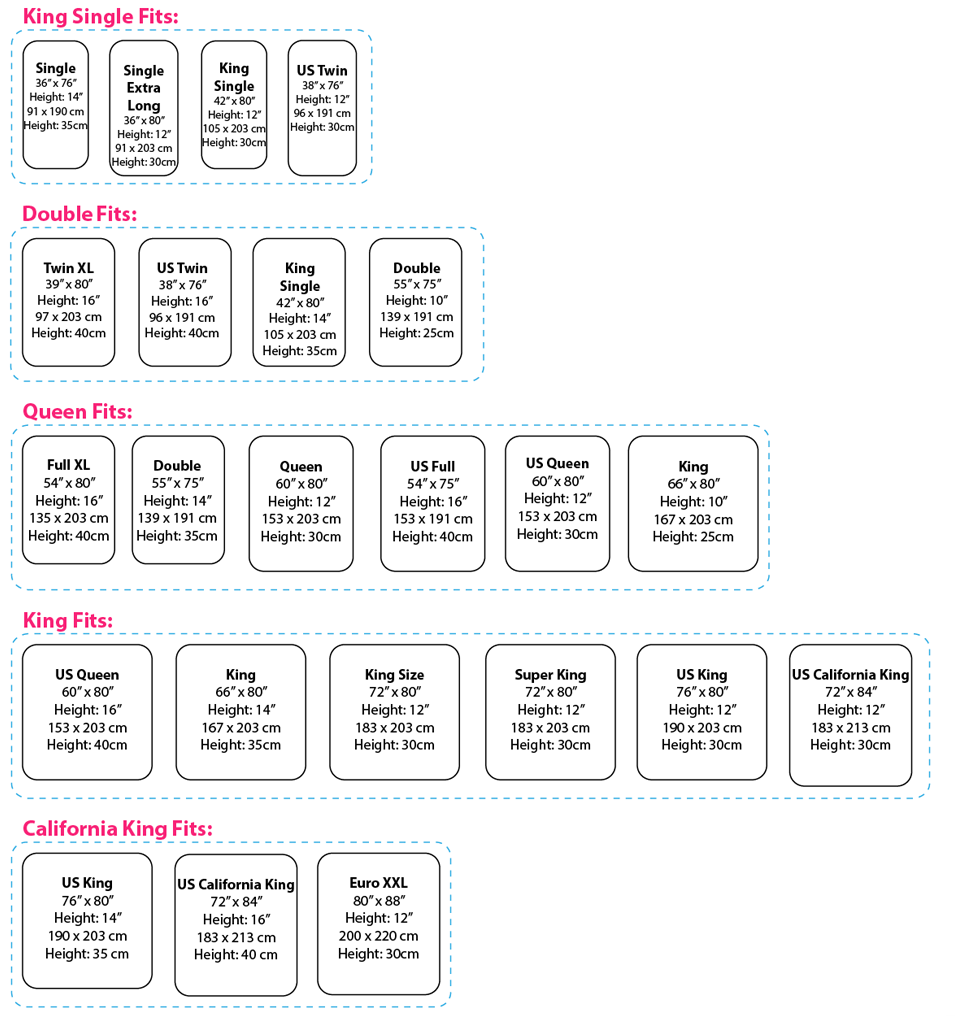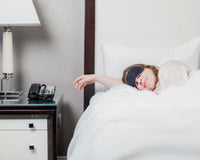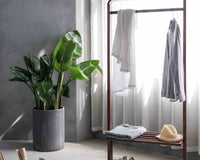If you haven't yet heard of Marie Kondo we can only assume you've been living under a rock for the last two months. Her 'tidy house, tidy mind' mantra has given the Japanese organising consultant and author almost cult-like status amongst a growing legion of followers, who swear the clean up tips and tricks on her popular Netflix series have been literally life-changing.
So why has this caught our attention and what's it got to do with sleep? Well - everything as it turns out!
We left you in 2018 pondering the benefits of 'clean sleeping' in the hope that you'd join us and add it to your list of resolutions for the new year. Now 2019 is upon us, we want to take this a step further and look at not only what's in your bedroom but where in your bedroom it's located. Which is basically Marie Kondo meets feng shui. Keeping up?
Essentially, once you've cleared the clutter out of your bedroom (random gym equipment, overflowing washing basket, digital devices, piles of books you'll never read...you get the picture) you've created the clean sleep/Kondo vibe. Then it's time to follow some basic feng shui principles around orientation, placement and arrangement rooted deep in ancient Chinese geomatric practice to curate the ultimate restful environment for guaranteed better sleep.
Let's break it down.
1. Your bed should face the door
Your bedroom is your sanctuary and you're right to feel protective of that space - which means you're careful who you let into it (unless you share your home with toddlers, in which case they basically have free reign). The theory behind positioning your bed so that you can see your door is so that you keep control of this environment by immediately being able to see whose coming in, as soon as they appear. Feng shui guidance says not to place it directly facing the door, though, as you could then feel too visible and vulnerable.
2. Hanging art...less is more
If - other than your partner - the artwork hanging on your walls is the first thing you see when you open your eyes, doesn't it make sense that it should be something to inspire a positive, nurturing start to your day? Feng shui advice says to display artwork that is romantic, coupled or paired (if you're sharing your bed with someone that is) and avoid displaying artwork that feels single solitary. Kondo fans would also tell you that a decluttered bedroom means you actually create space to hang artwork in a meaningful way to really show it off and give it chance to shine rather than make it fight for space amongst crowded shelves and overloaded dressing tables.
As for family photographs; whilst those with children may like to showcase their growing brood in prints all over the house, the bedroom is not the place to do it, not should parent or grandparent photos creep in either. This is your space for you (or you and your partner) and your artwork should reflect your personalities and passions, not anyone else's.

3. Banish the mirror!
Why? Well, according to feng shui beliefs, mirrors reflect energy and this causes excess energy in the room that is disruptive to sleep. We knew that, right?
But if you really need to have one in your bedroom, common sense says to avoid placing it facing the bed, or simply cover it with a sheet before you go to sleep.
4. No sloping or angled ceilings
This is all about the distribution of energy in your bedroom. Sloped ceilings create an uneven distribution of energy aroud the room, which then gets pushed down onto the bed, potentially leaving you with feelings of oppression or claustrophobia. Sort of makes sense whether you're a believer in feng shui or not we'd say.
If your bedroom does have a single sloped ceiling, then at least you can position the bed so that it isn't directly underneath the angle.

5. Head's up
This is probably the easiest of all principles to follow and the chances are, you abide by it anyway, without realising it has anything to do with feng shui.
If the headboard of your bed is supported by the wall behind, the theory is that this will replicate the feelings of nurture and support for the people sleeping in it. Ahh, sweet!
6. Don't put anyone in the corner
Nobody likes to feel 'closed in', especially at bedtime, then there's the awkward clambering over each other if one side of your bed is pushed up against the wall. Obviously there may be no option but this if your bedroom is particularly short on space (or it may not bother you at all because you sleep alone) but, where possible, feng shui advice is to ensure there's adequate room for both people using the bed to access their 'side' independently and be able to keep their own (minimal...think Kondo!) valuables, alarm clock and a book to read on their own bedside table. Speaking of which...

7. (Bedside) table talk
Most of us wouldn't do without a bedside table and that's absolutely fine - if you choose their style carefully. They should be of equal height and size as this reflects balance and equity within the relationship of the people sharing the bed and using them. Your bedside table shouldn't be the same height as where you lay your head, though, and edges should be curved or rounded to avoid attracting negative, sharp or 'sha' energy.
8. To wardrobe or not to wardrobe?
This conundrum is a great example of how three principles - clean sleeping, Marie Kondo's rules and feng shui principles really come into play. Clean sleeping advocates would argue there shouldn't be anything but a bed in a bedroom but for most people, that's pretty much impossible. When it comes to feng shui, the placement of wardrobe has a great impact on the room bedroom as it's said that a proper and well-placed wardrobe will bring you a peaceful mind. The wardrobe shouldn't dominate the room, nor should it loom over the bed or take up valuable natural light by being too close to the window. As for the contents - following Kondo's rules around decluttering, letting clothes breathe and folding rather than hanging where you can, should make for a happy clothing storage solution.
We love hearing what our customers think about our sleep-related wonderings and musings here on the blog, so do let us know if any of this works for you by jotting down your thoughts in the comments section below. And feel free to share your own tips. Sleep tight!







